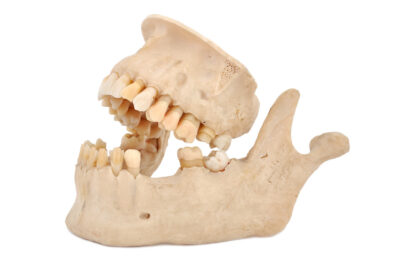Fill the Gaps with Bone Grafts
The professional staff at the Placerville Dental Group encourages you to do what can be done to keep your teeth and their roots. Saving the original is always the first choice when you have serious problems with one or several of your teeth. But sometimes there are problems that require a tooth to be pulled, such as severe trauma from sports injuries and accidents or devastating amounts of decay. Our dentists will help you make an informed decision about replacing lost teeth. For the best outlook for your long-term dental health, we always present the option of replacing teeth with dental implants.

The lower jaw shows the gap left in bone by the loss of a tooth.
The roots of your teeth are quite extensive and go deep into your jawbone. When extracted, the space that your root took up is left empty, as is the former location of your tooth. Just as nature “abhors a vacuum,” your mouth doesn’t like missing teeth and roots. In time, the space can cause your remaining teeth to shift and you will likely experience bone loss in your jaw after the loss of the tooth.
Imagine the problem is like something you may have experienced while gardening. If a well-established tree is pulled out by its roots, the ground is left with a large, gaping hole. If you want to plant a new tree where the old one stood, you have to put in some soil for the new tree to take root. Similarly, if you have a tooth pulled, our Placerville dentists need to add some “soil,” and in this case that’s bone grafting material, so the hole closes and your future implant has jawbone for “taking root.” Your options for bone graft materials are found in our Oral Surgery section dealing with bone grafts.


